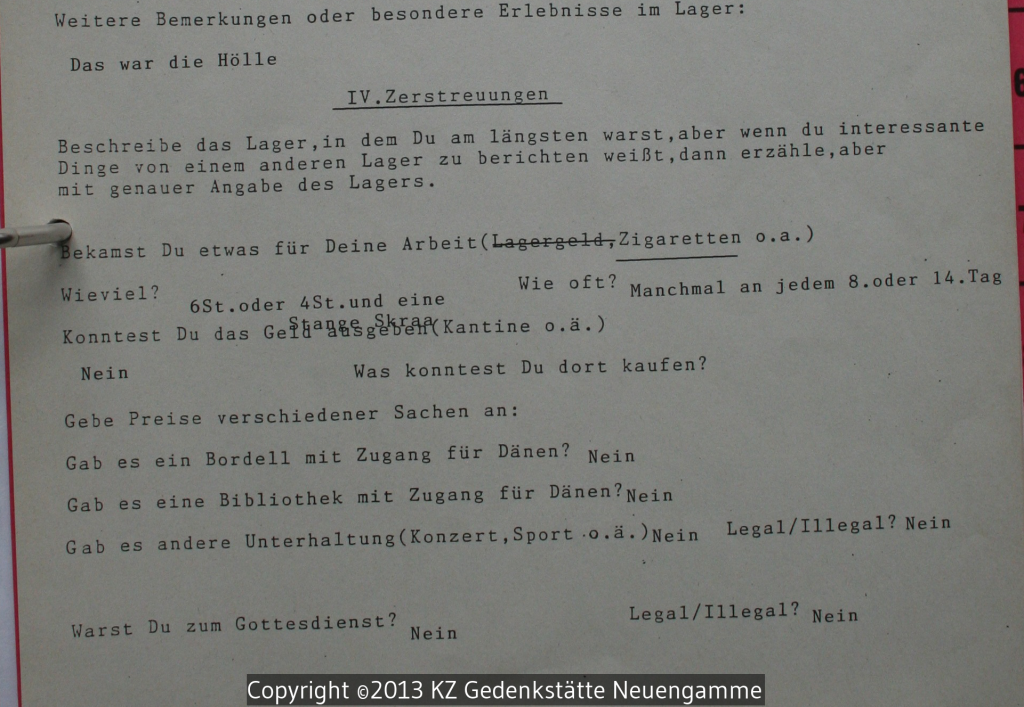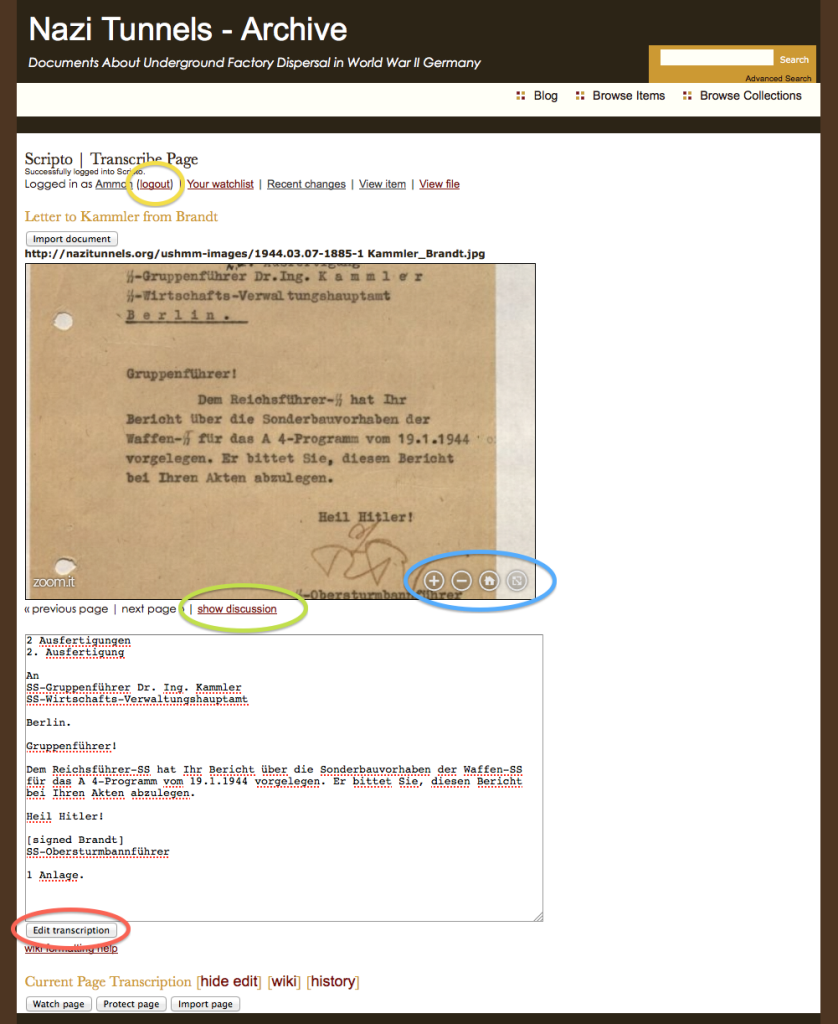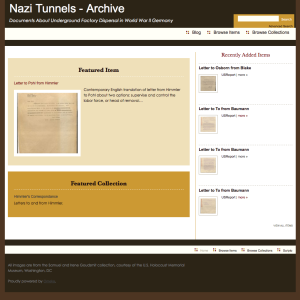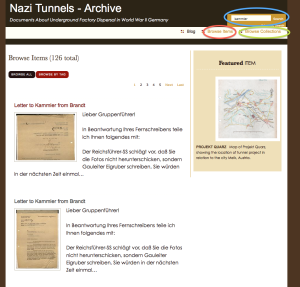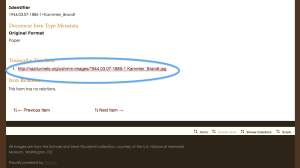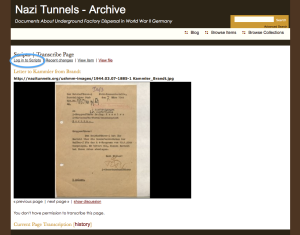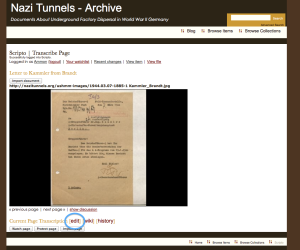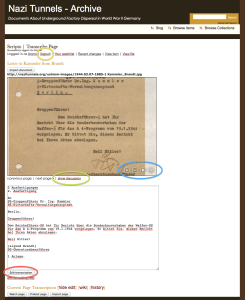While reading through the survivor accounts that I gathered from the Neuengamme Concentration Camp Memorial last summer, I found a unique report. Apparently at one time either the Danish government, the National Museum in Copenhagen, or the Freedom Museum in Copenhagen put out a survey to former concentration camp inmates.
Axel Christian Hansen was one such inmate. Born in 1899, he was captured in Denmark as a political dissident on September 30, 1944. Sent first to Neuengamme, he was then sent to Porta Westfalica on October 3. His answers are terse, yet convey much; as do the questions left unanswered. Here are a few of the questions and his answers. The survey was conducted in Danish on an unspecified date, and translated into German in 1990.
The first section deals with his transportation from Neuengamme (near Hamburg) to Porta Westfalica.
Type of transportation: Cattle car/ passenger car/automobile/ship – open/closed
How many in each car: 50 men
Was there straw or carpet or other? No
Did you receive any rations during the trip? bread-jam-meat? No
How much?
Did you receive anything to drink? No
How did you relieve yourself? In the corner of the car.
Were there air raids? Yes
Did you stay in the cattle car? Yes
Was it locked? Yes
Where were the guards? In the first car.
Where there any dead or wounded? No
Where there any escape attempts? No
Was there any mistreatment? No
Further comments regarding the transportation and description of exceptional experiences.
There was no time to sleep in the train car because there were too many of us. When we were shipped to Porta, we were given a little bit of water and a little bit to eat from a guard.
The second part deals with the arrival in Porta Westfalica.
What did you have remaining of your things upon arrival? A belt.
Was your face or head shaved? Yes
Was your body shaved? Yes
Where you shaved in another way? Yes, with a reverse mowhawk
How often did you get a reverse mowhawk (Autobahn)? 3 times
When were you allowed to grow your hair? Never
Section three deals with daily life.
How often did you receive a change of clothes (approximate date received)? The prisoner clothes were never changed.
What was exchanged? Shirt and underpants were changed every third week.
Was there any opportunity to wash or receive washed clothing? No
What kind of shoes? Wooden shoes (clogs)
Condition of the shoes? bad
List your other personal belongings (toothbrush, soap, tissue, toilet paper, etc, and how long you had them)
How many roll calls were there per day? about 4-5
When? Mornings, evenings, middle of the night
How long did they normally last? from 1 to 3 hours
How long did the longest last? 3 hours
There is much more to be found in the document. It will be available in the document repository I am building with Omeka, where it can be translated and transcribed by anyone who wants.
Much about the camp life is known because of memoirs of the Danish political prisoners. Following are a couple of books by Danish survivors:
